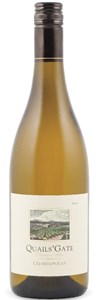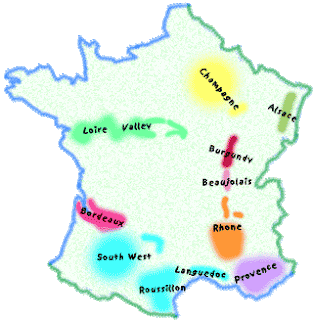So last night was Wine & Cheese tasting on Google Hangouts, with Natalie MacLean and some other quirky wine and food personalities. There was some sipping, some nibbling, some agreeing, some debating, lots of laughing, and a smashed bottle $70 bottle (ouch). The format last night focused on the 6 cheeses, and then our suggestions for which of the 9 wines did (or did not) pair well with the cheese. Not always orderly (I will have to look back myself and try to recall what happened) it WAS fun.
Watch the video here!
I was lucky enough to be located in the same area as the
Food Gypsy Corinna Horton so we teamed up. I say lucky, because she whipped up some condiments to do a side pairing with the cheeses so I had additional nummies to try. I hope she posts them soon - it will be a great way to enhance any wine & cheese event you may like to try in the future!
I think wine and cheese events are a great theme to a party, especially for other foodies or oenophiles. It's the ultimate in simple - no all-day cooking marathons for a wine and food pairing (it has been done!) and it is a great way to keep discussion going.
To make things even more light and fun - I will also make some suggestions for pairing cheeses with local beers! There maybe be some debate around this, but I think beer may even pair
better with cheese than wine does. That's because the effervescence (bubbles) in beer help cleanse the palate and really help you taste both the beer and the cheese. Beer and cheese tasting is less expensive because of (generally) smaller packaging & cheaper prices. It also means you can do a tasting in a smaller group, try many more types, and not be left with many half-drunk bottles or fully-drunk friends.
______________________________________________________
10 Tips for pairing Cheeses with Wine (or Beer)
1.
Match the weight of the cheese to the wine/beer: light and tangy cheeses with light and fresh wines,
2.
Compliment flavours: buttery, creamy brie with a buttery, creamy chardonnay; fresh, tangy goat cheese with a fruity and crisp sauvignon blanc; earthy pinot noir with an earthy Oka.
3.
Contrast flavours: Creamy cheeses pair well with high-acid wines such as riesling or chardonnay
4.
Go tart: Acidity in wine/beer pairs well with cheese because it cuts through the creaminess and fattiness.
5.
White wine & beers pair best: again, because of acidity. Also, bubbles go very well with fatty foods, therefore sparkling wines and beer are excellent pairings.
6.
Red wines should be light or old: red wines generally have something called
tannin; this is the fuzzy, bitter feeling in your mouth that is similar to drinking an over-steeped cup of tea. These tannins don't go to nicely with the creamy fattiness of cheese, and it creates a harsh metallic taste. Young, light reds (think pinot noir, gamay noir (Beajoulais), or Chianti) that are low in tannin can pair well with cheese. If you want to pair a fuller-bodied red, older is better because the tannins crystalize and drop out of the wine as sediment as it ages. Although, if you really want a big California cabernet - do it! Pair it with older, hard cheeses with more flavour.
7.
Don't overchill; too much cold closes up the aromas and flavours. Take cheeses out of the fridge about an hour before to bring them to room temperature. Take heavier white wines and beer out of the fridge about half an hour before to let them open up.
8.
Yummy accompaniments; as I learned from Corinna last night, matching condiments is another easy way to double the fun of the event. Using some of the same general tips for pairing with beverages (compliment or contrast of flavours), purchase (or make, if you please) some spreads, dips, pates, nuts, pickle, pastes, etc. to go with each of the cheese. Or course, have some sliced baugette or crackers as well.
9.
Try different pairings: Encourage people to try the cheeses with all the beverages, and see what people like and don't like. You will get a range of opinions from a range of palates and it will make things more fun. You've reached a great pairing when the cheese or wine/beer brings something out in the other that wasn't as obvious before.
10.
Have fun! Feel free to break the rules.
______________________________________________________
Now with these tips in mind, I will tackle the cheeses we tried in last night's Wine & Cheese pairing, give you the best wine pairing(s) from that night, as well a (Bonus!) Ontario beer that would be fantastic as well. The wine links will take you to the reviews on the Natalie MacLean website, which will give you her reviews as well as the reviews from the other participants!
Cheese & Wine (& Beer) Pairing
1. Comfort Cream, Upper Canada Cheese Co., Jordan
Station, ON.
A Camembert style cheese from the Niagara region, it has a soft white bloom
outside with a slightly creamy butter-yellow center. Flavours are butter,
cream, mushroom, with a tangy-bitter finish.
Wine Pairing: a crisp,
refreshing riesling goes well as a contrasting pairing; the
Jackson-Triggs Reserve Riesling 2011
is off-dry with mouthwatering acidity and aromas and flavours of lemon, lime,
peach, honey, and minerality. Also a great pairing that compliments the cheese
is the
Le Clos Jordanne Village Reserve Chardonnay 2009; rich aromas of buttered popcorn, lemon, pear, and
vanilla also backed with racy acidity both compliments the cheese and cuts
through the creaminess.
Beer Pairing: Steamwhistle Pilsner from Toronto, ON is a
refreshing and crisp beer with aromas of grassy Noble Hop, which is a great
refreshing contrast to this creamy and buttery cheese.
2.
Alpindon, Kootenay Alpine Cheese Co.
Creston, BC.
This is a cheese made in the traditional French style of
Beaufort D'alpage, it
is hand-rubbed and made only with milk from summer pastures. It's is a golden,
well-aged cheese with a smooth nutty & buttery, almost fruity taste, firm
texture with some crystalization, and a thick rind.
Wine
Pairing: A very well-priced oaked chardonnay at $10.95,
the Jackson-Triggs Reserve Series Chardonnay 2011 has firm oak aromas of butter, smoke, and vanilla
that again matches the rich buttery/nutty flavour of this cheese, while the
stone fruit and citrus is refreshing against the meatiness of the cheese.
Beer
Pairing: Broadhead's Long Shot White
beer in Ottawa, ON (available in growler's from the brewery's newly-expanded
location mere blocks from my work!) is a yellow hazy unfiltered wheat beer that
is full-flavoured and fruity while stille refreshing, with some spiciness from
coriander and orange peel. The meatiness of the beer matches well the meatiness
of the cheese, while the fruitiness and spice works well to compliment the
nuttiness.
3.
1608, Laiterie Charlevoix,
Baie-St-Paul, QC.
This is a creamy yellow, semi-firm "pasta" cheese that is great
for cooking with. It has a lot more tang to it than the firm two cheeses, but
this melts in your mouth. Yum!
Wine
Pairing: the
Jackson-Triggs Reserve Series Sauvignon Blanc 2011 was very fresh and crisp, with lovely melon and
citrus and slight herbaceousness, without being overwhelming as some
cool-climate sauv blancs can be. The freshness of the wine really enhances the
tanginess of this cheese, while the acidity cuts through the melt-in-you-mouth
creaminess.
Beer
Pairing: Nickel Brook Organic Lager from Burlington, ON is a beer that
has a suprisingly creamy taste for a pale lager. Light amber in colour, it has
a bit of weight in the mouth and some light fruitiness (I detected
raspberries), some balanced hop bitterness and a short, clean finish that
matches both the tang and texture of the cheese.
4.
Onion Cheddar Cheese, St.-Albert Cheese Company, St.
Albert, ON.
This cheese was a little simple indulgence - it was like reverse french
onion soup for me. A simple tangy cheddar with bits of sweet and savoury
caramelized onion.
Wine Pairing: I really enjoyed the
Jackson-Triggs Reserve-Series Merlot 2010 with
this cheese. I felt that it had the same sweet-and-savoury property as the
cheese, with rich black fruit and pepperiness that complimented with sweet
caramelized onion.
Beer Pairing: the idea of yummy, cheesy french onion soup in a pub
made me think I would like a thick, dark, creamy beer. Luckily,
Kichesippi beer right here in Ottawa
just came out with their latest
seasonal beer last week, Logger, which is a "Pennsylvannia Porter"
style, which is a porter-style lager. The beer has a creamy texture with
mocha-nut flavours, but a cleaner, shorter finish than a "regular"
(ale-style) porter. This beer is also only available in growlers from the
brewery.
5.
Madagascar Green Peppercorn, Bothwell Cheese Inc,
New Bothwell, MB
This is another simple, slightly creamy cheese flavoured in a big way with
green peppercorns that really ads a spicy punch.
Wine Pairing: I found both the
Open Cab2 Merlot 2011 and the
Inniskillin Pinot Noir 2011 to have a
rich, sweet berry-vanilla quality to it that I found to be a nice contrast to
this cheese. I found the cheese to be a bit harsh with a lot of the other
wines, enhancing greatly either the pepperiness or the greenness which I didn't
find pleasant. But some others like that!
Beer
Pairing: Another even darker beer, Flying Monkey's
Netherworld Dark Ale from Barrie, ON is a whole lot of beer. It's a black IPA
style, which exhibits rich dark chocolate and coffee-like flavours and a creamy
texture, but with a very refreshing finish from a good dose of hoppiness. I
found it weighty, but refreshing again the spiciness of the cheese.
6.
Bleu d'Élizabeth, La Fromagerie du Presbytere,
Sainte-Élisabeth-de-Warwick, QC
This is an organic, semi-soft cheese made from unpasteurized milk. It has a
natural rind and tons of rich blue-green veins from Penicillium Roqueforti. It
is very buttery, tangy, and intensely salty cheese. Very full-flavoured!
Wine
Pairing: The only wine that was not killed by this intensely
flavoured cheese was the
Inniskillin Wines Sparkling Vidal Icewine 2011 -
what a treat this wine it! Intense contrasting aromas and flavours of tropical
fruit and stone fruit, honey, and just enough balanced acidity to tame the wild
cheese. The effervescence of this wine was a bonus, and does a great
"clean-up" job of refreshing the palate!
Beer
Pairing: This huge cheese needs a huge beer as well -so I
picked one of my personal favourites lately,
Amsterdam's Boneshaker from Toronto, ON.
It's a strong, unfiltered IPA that is not for the faint of heart. This beer
also has huge tropical fruit notes, with grapefruit, citrus peel, and a long
hoppy bitter finish. The fruitiness is again a nice contrast against this salty
cheese, with a very refreshing finish. I recently spotted it in the LCBO here
in Ottawa, previously I had obtained it from the brewery.
______________________________________________________
The only wine we had trouble pairing was the
Open Chardonnay 2011. We found it to a very light, simple, fruity wine that didn't quite have the backbone to pair with the cheese, but it is a nice light sipper if you're looking for something really easy-going.
Another great review posted from one of the wine-and-cheese culprits, Dan Trcka aka Grape Selections:
http://grapeselections.com/trickledown/













